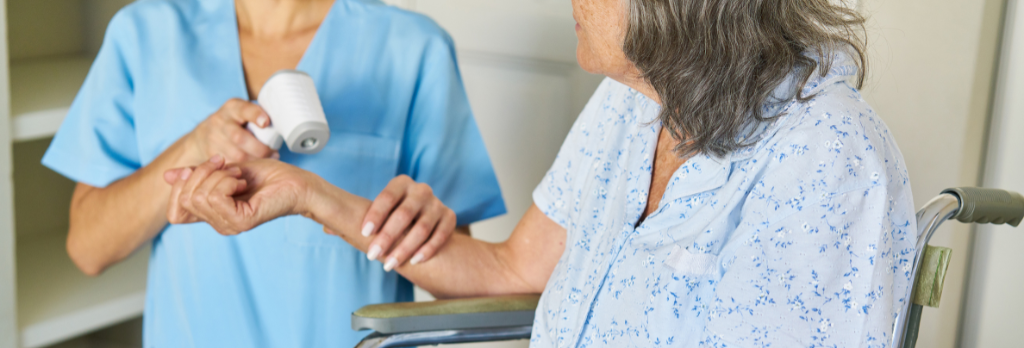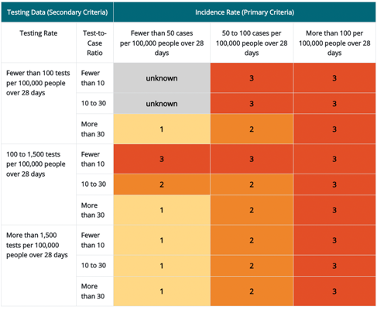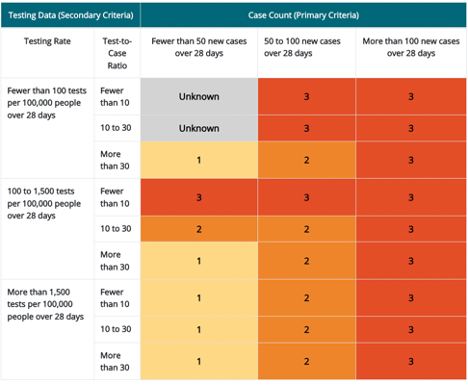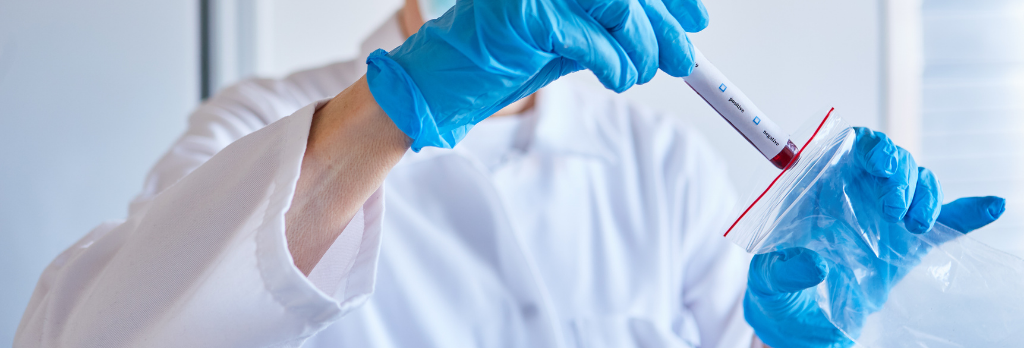Telehealth and Telemedicine during COVID-19
May 31, 2022
Key Points
- In 2020, countries reported on average, about half of essential health services were disrupted -WHO “pulse survey“external icon
- Pursue telehealth as an alternative to face-to-face healthcare services, commonly used pre-pandemic, to:
- Reduce unnecessary exposure to COVID-19,
- Help mitigate the spread of the virus, and
- Reduce surges in hospitals and clinics.
This guidance document is developed to encourage healthcare providers to explore ways of meeting the essential healthcare needs of the community using innovative telehealth modalities and technologies; and expand the use of telehealth in the care of patients, and telemedicine in the care of COVID-19 and other non-COVID-19 patients.
What is Telehealth?
Telehealth is remote patient care and monitoring. It allows direct transmission of a patient’s clinical measurements from a distance to their healthcare provider and may or may not be in real time. The telehealth session may also be facilitated by a Healthcare Professional (to other healthcare professionals), Village Health Volunteer -VHV, a Community Health Worker -CHW visiting the patient, or by the patient him/her-self, a parent or a legal guardian. Telehealth can be any combination of healthcare services including telemedicine. Some healthcare specialties default to “referring to all of such services” as telehealth. “TeleCOVID-19” care is Telemedicine.
Examples of Telehealth Care include:
- Screening for COVID-19, testing recommendations, and guidance on isolation or quarantine
- General health care (i.e. wellness visits, blood pressure control, advice about certain non-emergency illnesses, like common rashes)
- Non-emergency follow-up clinics
- Prescriptions for medication
- Nutrition counseling
- Mental health counseling
- Physical therapy exercise
- Teleradiology
- Tele-intensive care (in infectious disease hospitalizations)
- Telemedicine
Telehealth decreases contact with healthcare facilities, other patients, and healthcare staff in order to reduce the risk of COVID-19 spread in the community.
Generally, Telehealth Modalities include:
- Synchronous: Real-time telephone or live audio-video interaction, typically with a patient, using a smartphone, tablet, or computer.
- For example: In some cases, peripheral medical equipment (e.g., digital stethoscopes, otoscopes, ultrasounds) can be used by another health care provider (e.g., nurse, medical assistant) physically with the patient, while the consulting medical provider conducts a remote evaluation.
- Asynchronous:The provider and patient communication does not happen in real time.
For example, “store and forward” technology allows messages, images, or data to be collected at one point in time and interpreted or responded to later. Patient portals can facilitate this type of communication between provider and patient through secure messaging. Other examples of telehealth modalities developed/used by American College of Obstetricians and Gynecologistsexternal icon include:
- Live, two-way (or real-time) synchronous audio and video allows specialists, local physicians, and patients to see and hear each other in real-time to discuss conditions e.g. via phone or computer (also defined above).
- Store-and-forward, also referred to as “asynchronous telemedicine,” sends medical imaging such as X-rays, photos, ultrasound recordings, or other static and video medical imaging to remote specialists for analysis and future consultation (also defined above).
- Remote patient monitoring collects personal health and medical data from a patient in one location and electronically transmits the data to a physician in a different location for use in care and related support.
- mHealth is a general term for self-managed patient care using mobile phones or other wireless technology and does not necessarily involve monitoring by a physician. It is most commonly used to deliver or reinforce patient education about preventive care and provide medication reminders, appointment reminders, and other essential self-care steps that patients should undertake to maintain their optimal obstetric health.
What is Telemedicine?
Telemedicine is the use of electronic information and telecommunication technology to get needed health care while practicing physical distancing. This encourages meaningful use of patient health measures to help guide the engagement of patient in care.
Telemedicine goals for Developing Countries should includeexternal icon, but not be limited to:
- Remote diagnosing and teleconsulting* system. Data (including signals and images) are locally (patient-side) acquired and stored, and then forwarded to the main hospital, where physicians can analyze those data. The remote (physician-side) hospital will then send back the diagnosis.
- Remote diagnosis performed with patient assisted by nurses. If no physician is in the neighborhood: such a situation typically occurs in rural locations of developing countries, and in some cases a preliminary diagnosis is locally performed by the aid of a decision support system (DSS).
- Remote monitoring system. The patient is monitored in the remote location, his/her signals are continuously acquired, forwarded to the main hospital, and possibly, locally analyzed by a DSS. Alarms are remotely detected and transmitted back to the patient-side. The monitoring system can be managed and locally controlled by a physician or by a nurse.
- Remote intervention system. The patient enters the operating room, the intervention is performed through a local (patient-side) robot that is remotely controlled by a physician in the main hospital. The remote intervention requires that some local assistance is performed by a physician or by a nurse.
- Remote education (e-learning) system. Students or caregivers (mostly physicians, nurses, and technicians) attend classes taught from remote academic institutions, and possibly by a bi-directional communication interact with the teacher by making up questions. Remote education can be locally assisted by a local tutor, during and/or after the classes.
*Note: Teleconsulting, i.e., expert second opinion, is performed among physicians, where a non-specialist physician requires a remote consultation with one or more specialist physicians: typically, such a situation occurs in emergency centers of rural locations or in minor hospitals of developed countries, or in any location of developing countries.
Potential Limitations of Telehealth
Adaptations to telehealth may need to be considered in certain situations where in-person visits are more appropriate such as:
- Due to urgency, a person’s underlying health conditions, or the fact that a physical exam or laboratory testing is needed for medical decision making.
- If sensitive topics need to be addressed, especially if there is patient discomfort or concern for privacy.
- Limited access to technological devices (e.g., phones, tablets, computers) or connectivity. This may be especially true for those living in rural settings.
- When healthcare workers or patients may be less comfortable with using the technology, and may prefer an in-person visit.
- When virtual visits are not readily accepted in lieu of in-person visits by healthcare workers or patients.
To learn more, please visit https://www.cdc.gov/coronavirus/2019-ncov/global-covid-19/telehealth-covid19-nonUS.html













